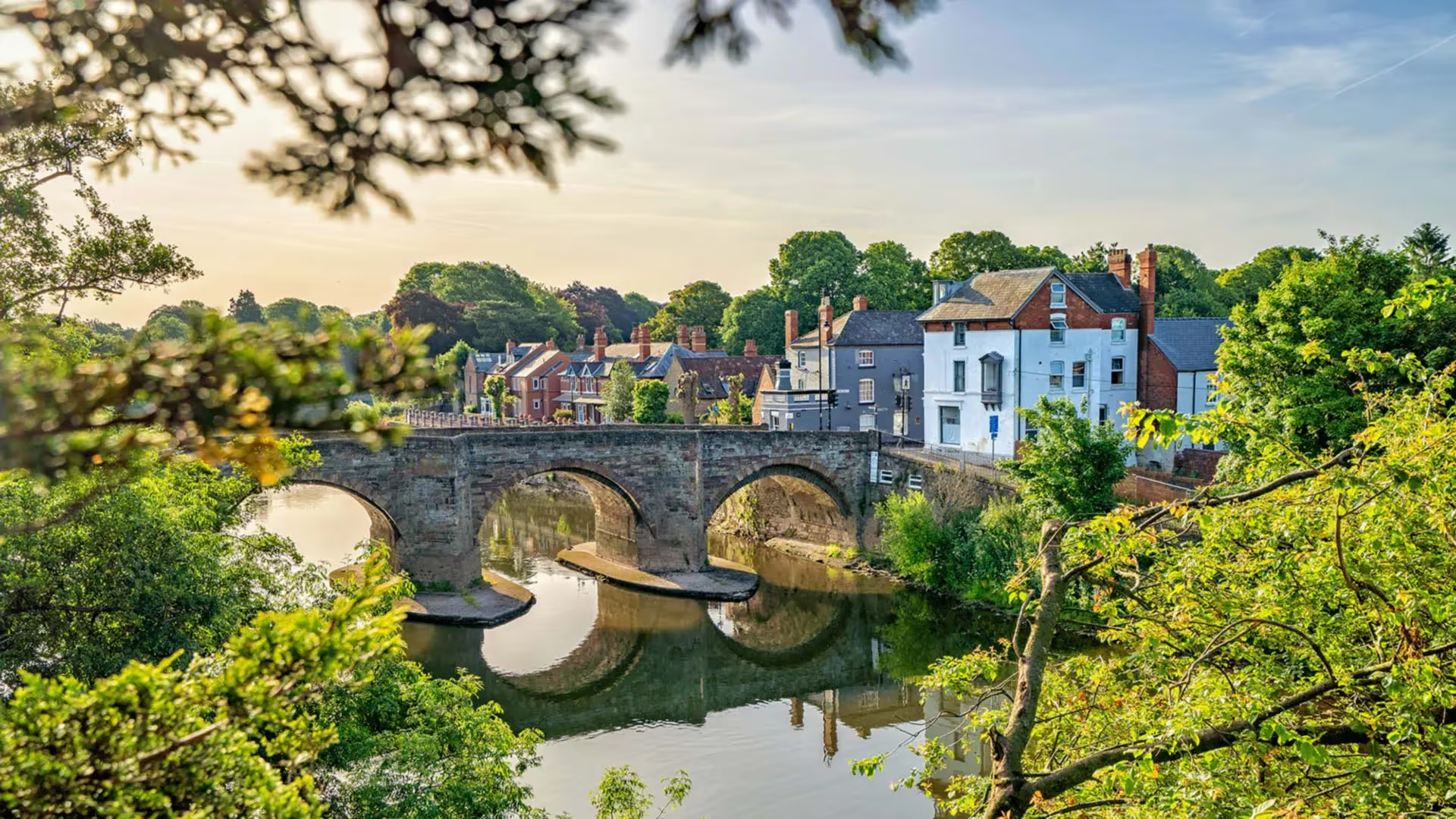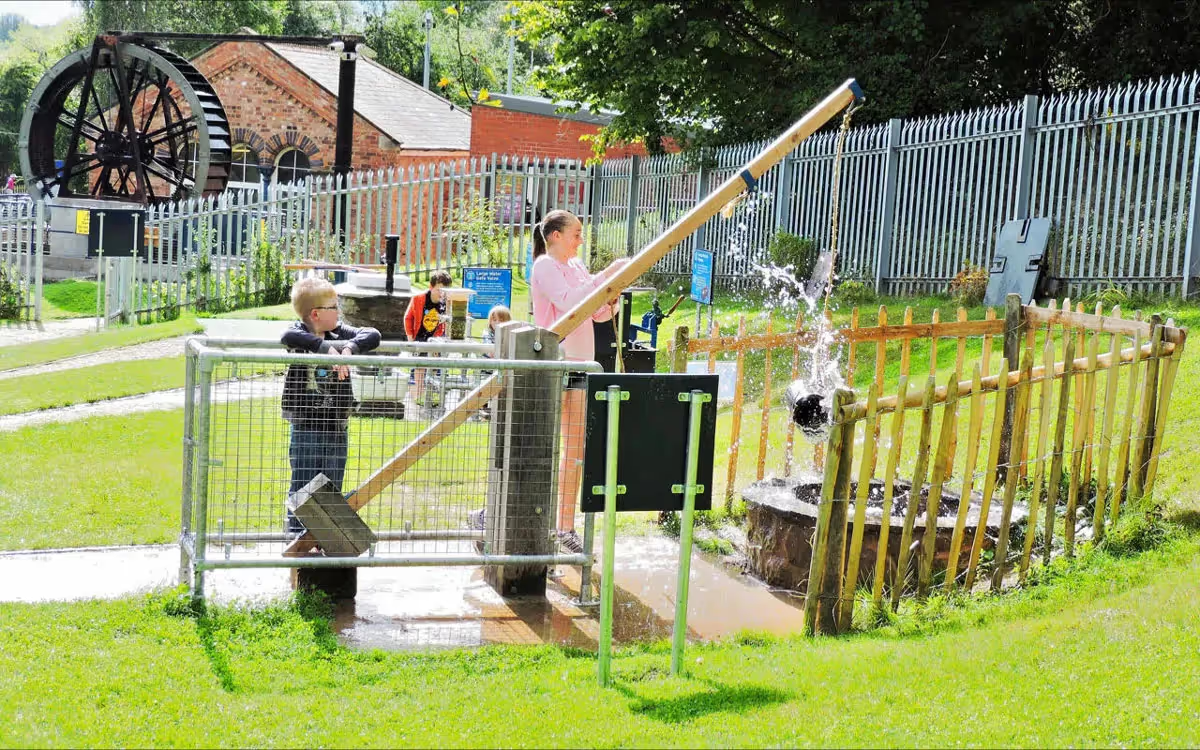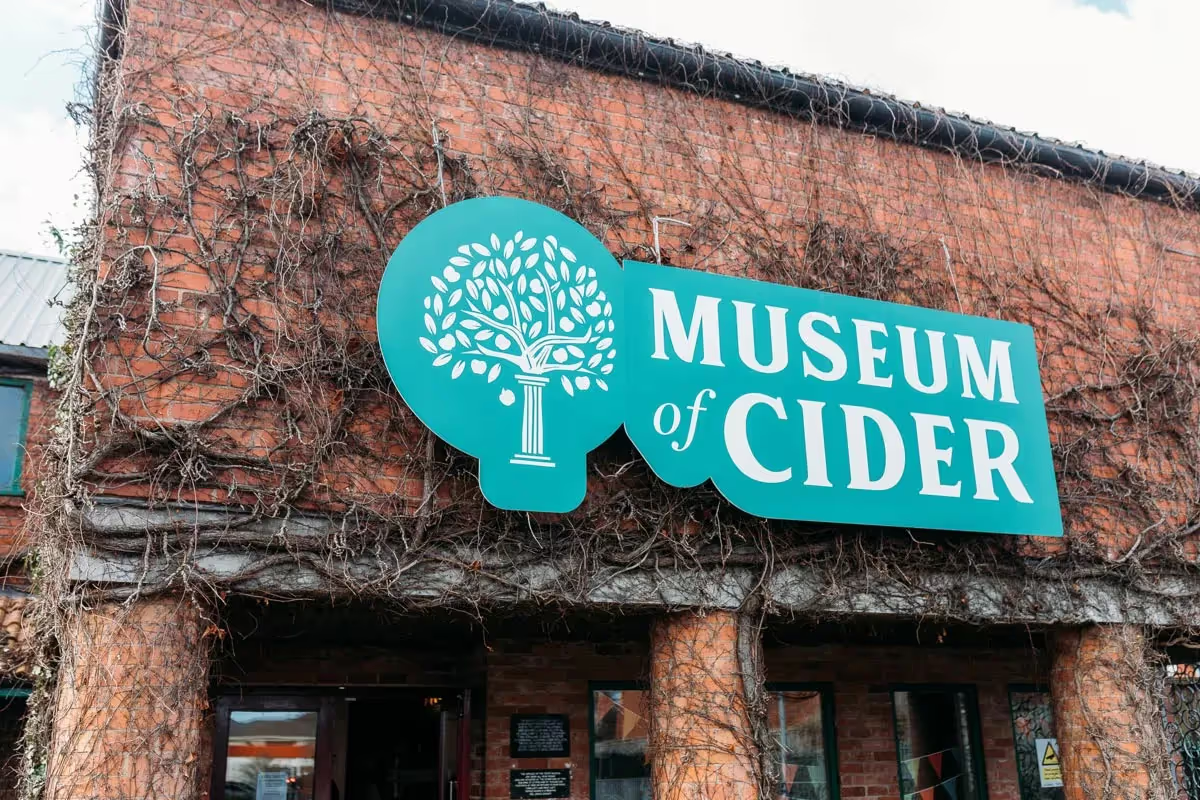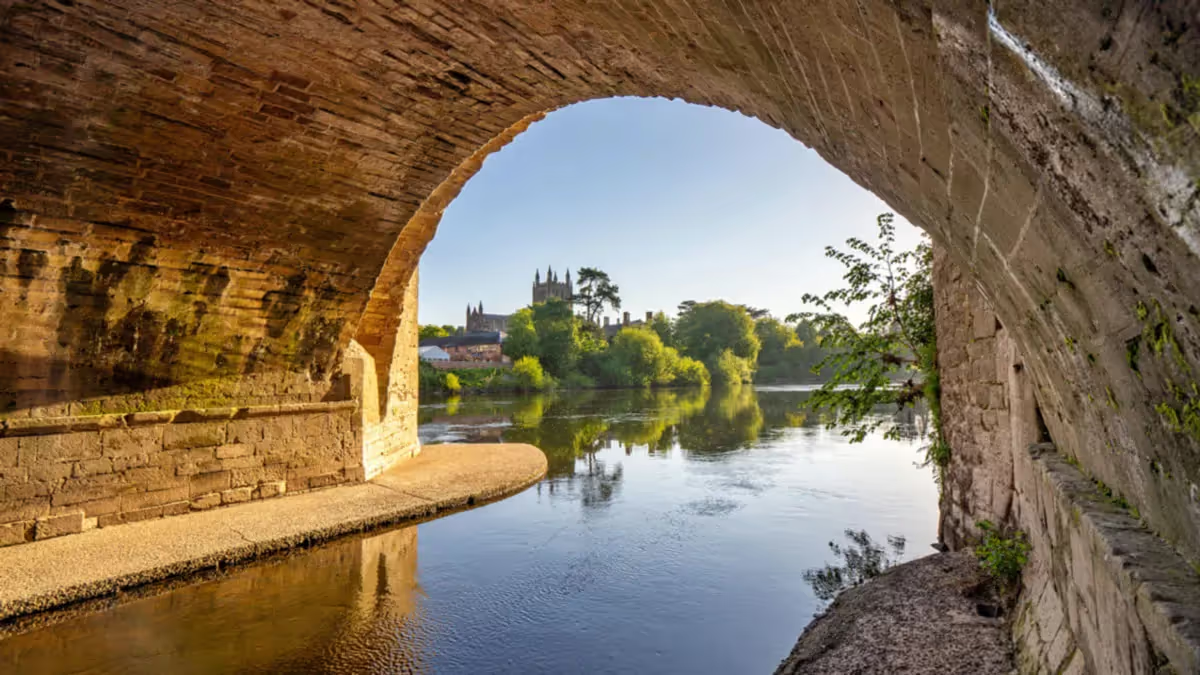


Filter Map
Start with a visit to Byford Church to see the wall paintings uncovered in 1951. There is a very short section along the A438 and then a long stretch of fairly quiet road, which crosses the line of Offa's Dyke. The route follows a section of old Roman road past the site of Magna Castra, a Roman walled town, believed to be home of the local British Dobunni tribe group. Back on footpaths cross the A438 again to walk through orchards and fields to the pretty church at Breinton with its lychgate and links to Sir Edward Elgar.
After the church the path hugs the riverbank. On the outskirts of Hereford a track on the left leads to the Waterworks Museum. Soon after climb steps up to the old railway bridge to cross the Wye, continuing under the new road bridge to reach the 15th century Wye Bridge.


Having followed the Wye for so many miles, which is a source of drinking water for many of the communities living along its banks, a visit to the Waterworks Museum (open Tuesdays 11-4) will bring the story of drinking water to life, through its collection of working pumps and engines, many of which are the last working examples of their kind.

Perfect soils and weather combine in Herefordshire to grow the finest apples and pears which are harvested to produce cider and perry. Hereford's Museum of Cider is housed in the original factory where Bulmers began making cider in 1888. The museum preserves the history of cider making worldwide with an extensive collection of cider mills, presses, bottles, photographs, watercolours and memorabilia, as well as a bottle shop where you can taste cider and perry.

The Wye Navigation Acts passed in the 17th century created 100 miles of navigation rights from Hay, through Hereford to the Severn. Wharves lined the riverbank in Hereford with weekly market boats departing for Bristol. Even though boats had to be hauled over rapids by gangs of ‘bow hauliers’ to reach the city, the watery highway of the Wye was preferred over the rutted roads of the time. Today the Wye is one of the few rivers in the UK where these traditional rights to navigate remain.


It’s a fantastic achievement to walk all 136 miles. Mark the miles by keeping a record of your journey, collecting (digital) passport stamps along the route…
MAKE A PASSPORT